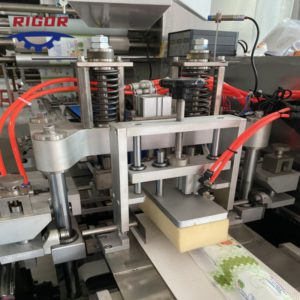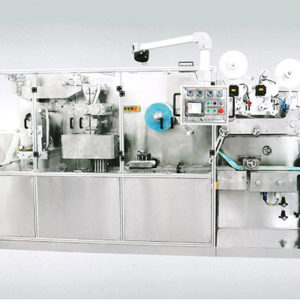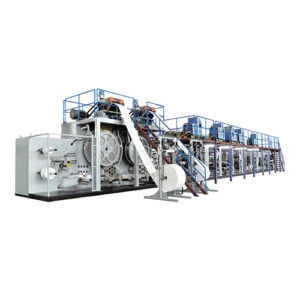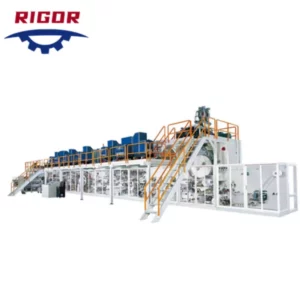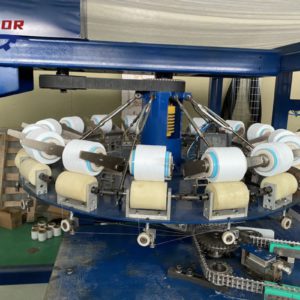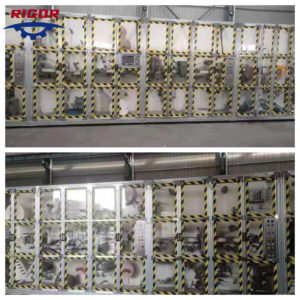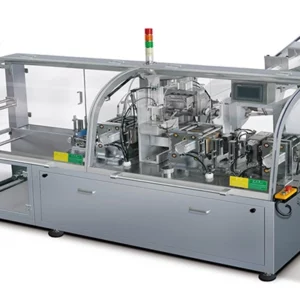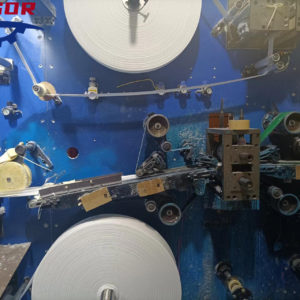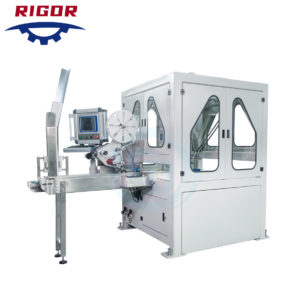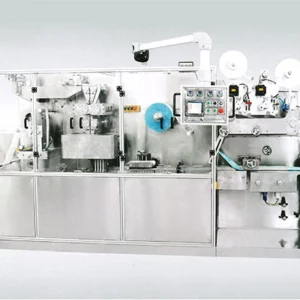In the world of baby care products, the demand for high-quality diapers continues to grow. Meeting this demand efficiently and effectively is made possible through the use of fully automatic baby diaper making machines. These innovative machines have revolutionized the diaper manufacturing process, offering increased productivity, improved quality, and cost-effective production. In this blog post, we will explore the features, benefits, and impact of fully automatic baby diaper making machines on the diaper industry.
Section 1: Understanding Fully Automatic Baby Diaper Making Machines

A fully automatic baby diaper making machine is a state-of-the-art device designed to automate the entire diaper manufacturing process. These machines integrate various functions, from raw material feeding to the final packaging, eliminating the need for manual intervention and streamlining production. Here are some key features and components of these machines:
Material Handling Systems: Automatic diaper making machines are equipped with advanced material handling systems that efficiently handle different components of the diaper production process. These systems include unwinding units for the raw materials, cutting and shaping mechanisms, and automated stacking units.
Control Systems: These machines incorporate sophisticated control systems that regulate and monitor the entire manufacturing process. These systems ensure precise material feeding, accurate cutting, proper folding, and consistent quality control, resulting in high-quality diapers.
Production Speed and Capacity: Fully automatic baby diaper making machines are designed for high-speed production, capable of manufacturing a large number of diapers per minute. They offer increased production capacity, allowing manufacturers to meet the rising demand effectively.
Customization Options: These machines provide flexibility in terms of diaper design and size. Manufacturers can easily adjust the machine settings to produce various diaper sizes, styles, and absorbency levels, catering to different market preferences.
Section 2: Benefits of Fully Automatic Baby Diaper Making Machines
The adoption of fully automatic baby diaper making machines brings numerous advantages to diaper manufacturers. Here are some notable benefits:
Increased Productivity: These machines significantly enhance productivity by automating various labor-intensive tasks. With faster production cycles and reduced downtime, manufacturers can meet market demands efficiently, resulting in higher output and profitability.
Improved Quality Control: Automatic diaper making machines ensure consistent quality through precise control and monitoring systems. They minimize human error and variations, leading to uniform product quality in terms of fit, absorbency, and overall performance.
Cost-Effective Production: By automating the manufacturing process, these machines reduce labor costs and improve operational efficiency. The elimination of manual labor and increased production speed result in lower production costs per diaper, contributing to overall cost-effectiveness.
Enhanced Hygiene and Sanitation: Automatic machines minimize human contact with the diapers during the manufacturing process, ensuring higher levels of hygiene and sanitation. This is particularly crucial for baby care products, where cleanliness and safety are paramount.
Section 3: Impact and Future of Fully Automatic Baby Diaper Making Machines
The introduction of fully automatic baby diaper making machines has had a significant impact on the diaper industry. These machines have transformed the manufacturing process, enabling manufacturers to produce high-quality diapers in large quantities, efficiently meeting market demands. Furthermore, the automation of the production process has improved overall product consistency, hygiene, and cost-effectiveness. As technology continues to advance, we can expect further enhancements in machine capabilities, including increased production speeds, improved energy efficiency, and enhanced customization options.
